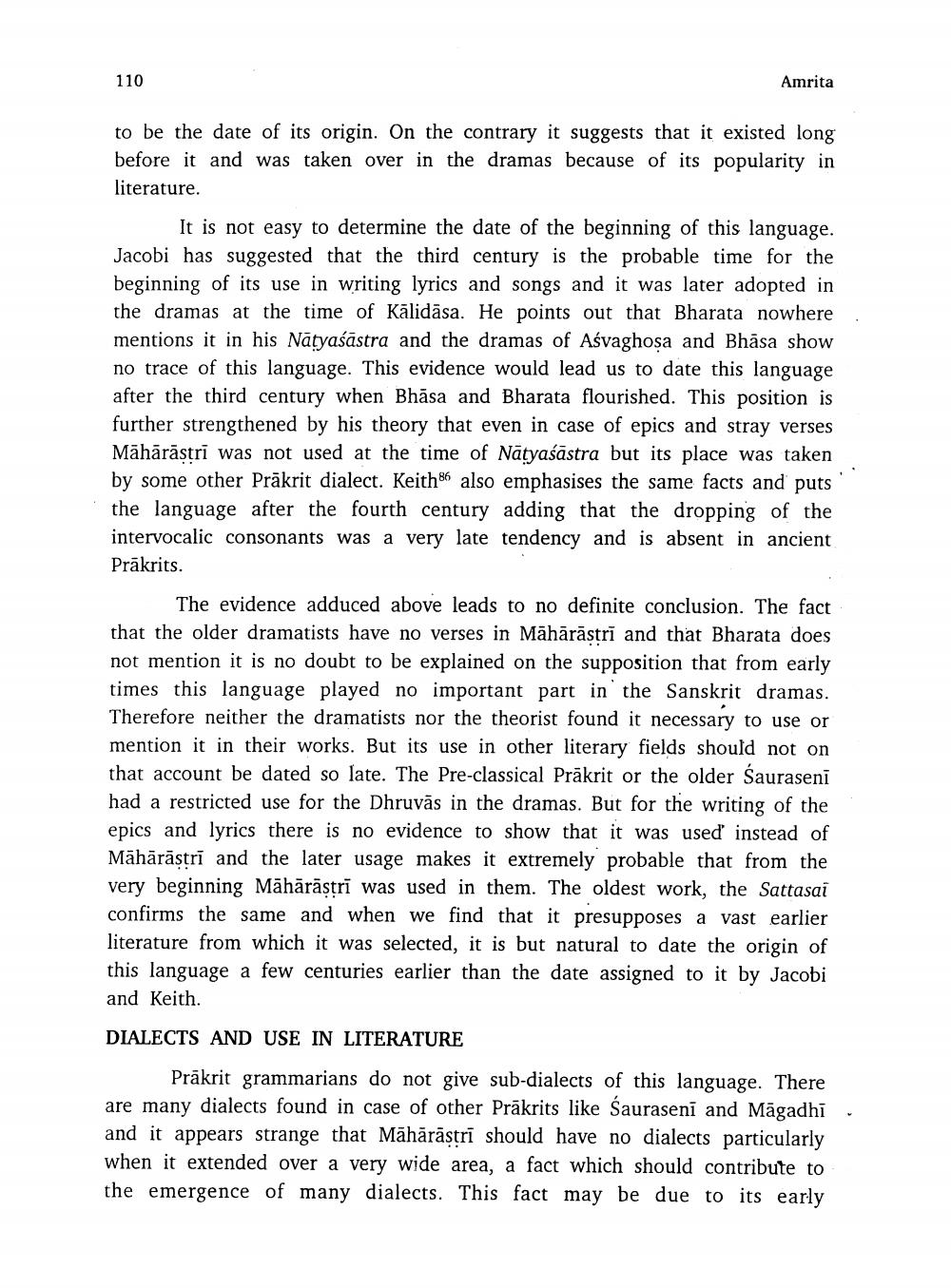________________
110
Amrita
to be the date of its origin. On the contrary it suggests that it existed long before it and was taken over in the dramas because of its popularity in literature.
It is not easy to determine the date of the beginning of this language. Jacobi has suggested that the third century is the probable time for the beginning of its use in writing lyrics and songs and it was later adopted in the dramas at the time of Kālidāsa. He points out that Bharata nowhere mentions it in his Nātyaśāstra and the dramas of Aśvaghosa and Bhāsa show no trace of this language. This evidence would lead us to date this language after the third century when Bhāsa and Bharata flourished. This position is further strengthened by his theory that even in case of epics and stray verses Māhārāstrī was not used at the time of Nātyaśāstra but its place was taken by some other Prākrit dialect. Keith86 also emphasises the same facts and puts the language after the fourth century adding that the dropping of the intervocalic consonants was a very late tendency and is absent in ancient Prākrits.
The evidence adduced above leads to no definite conclusion. The fact that the older dramatists have no verses in Māhārāstrī and that Bharata does not mention it is no doubt to be explained on the supposition that from early times this language played no important part in the Sanskrit dramas. Therefore neither the dramatists nor the theorist found it necessary to use or mention it in their works. But its use in other literary fields should not on that account be dated so late. The Pre-classical Prākrit or the older Sauraseni had a restricted use for the Dhruvās in the dramas. But for the writing of the epics and lyrics there is no evidence to show that it was used instead of Māhārāstrī and the later usage makes it extremely probable that from the very beginning Māhārāstrī was used in them. The oldest work, the Sattasai confirms the same and when we find that it presupposes a vast earlier literature from which it was selected, it is but natural to date the origin of this language a few centuries earlier than the date assigned to it by Jacobi and Keith DIALECTS AND USE IN LITERATURE
Prākrit grammarians do not give sub-dialects of this language. There are many dialects found in case of other Prākrits like Sauraseni and Māgadhi. and it appears strange that Māhārāstrī should have no dialects particularly when it extended over a very wide area, a fact which should contribute to the emergence of many dialects. This fact may be due to its early




